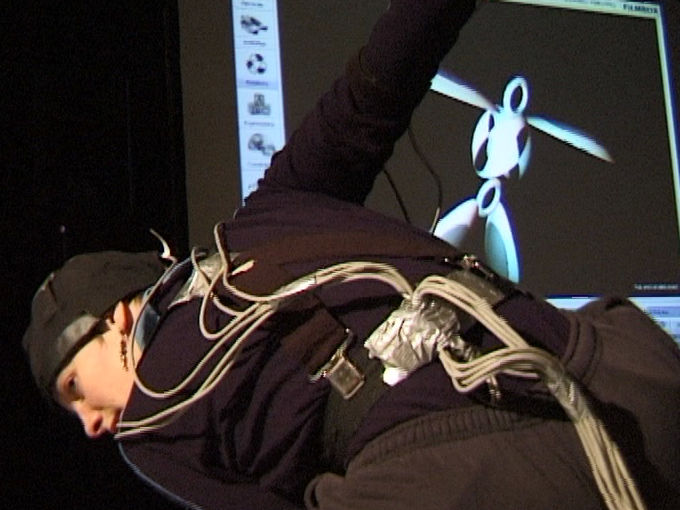Technical Details
The creature is designed and "virtually" built using 3d software on Silicon Graphics workstations.
This installation uses a magnetic motion capture system; the same motion capture equipment as used to produce many special effects for major feature films.
The human is connected to a computer via the motion capture system using the small sensors on her body. There is a transmitter nearby which generates a magnetic field within which the woman moves and the sensors on her body know where they are relative to the transmitter. This allows the computer to read the position of each limb in the space and hence know how the dancer is moving. This data is used by 3d graphics software to produce a live 3d image, the creature, that moves in response to the human’s movement.

The computer workstation is running a piece of software called Filmbox. The 3d graphic model of the creature has been imported into Filmbox, from where it can be manipulated on screen. Filmbox takes the information about the dancer’s movement and passes it to the creature, which reacts to it through a complex pattern of rules and conditions. This reaction is seen as movement of the creature on screen. The image of the moving creature is projected near the dancer.
So, in effect, the human sees the creature through her eyes, and the creature sees the human through the motion sensors on her body. The two dance a duet, both reacting to the other’s movement and thus carrying on a dialogue across the divide between the real world of the woman and the virtual world of the creature.
The Filmbox software also generates midi signals from the movement of both the human and the creature. These signals are sent to another computer which generates the sound and music. The music is derived from a series of samples and rules encoded into a virtual instrument and played via the midi signals. The music is output via a number of tracks to speakers spread throughout the space, creating the localisation of sounds in different areas.
